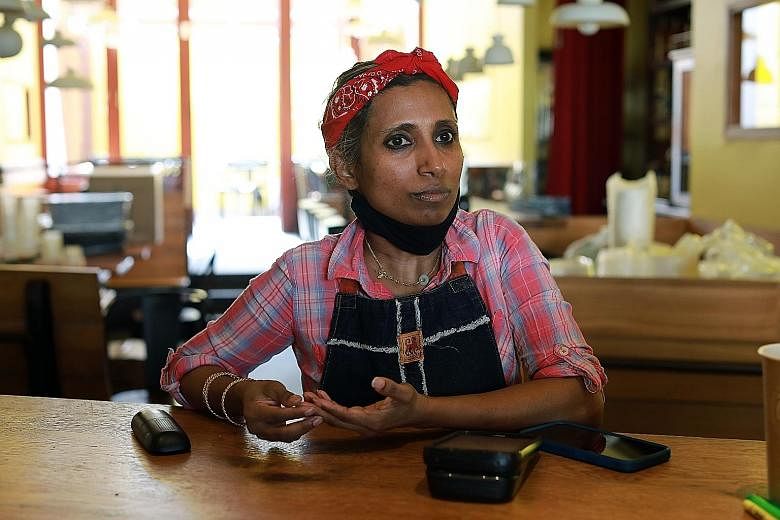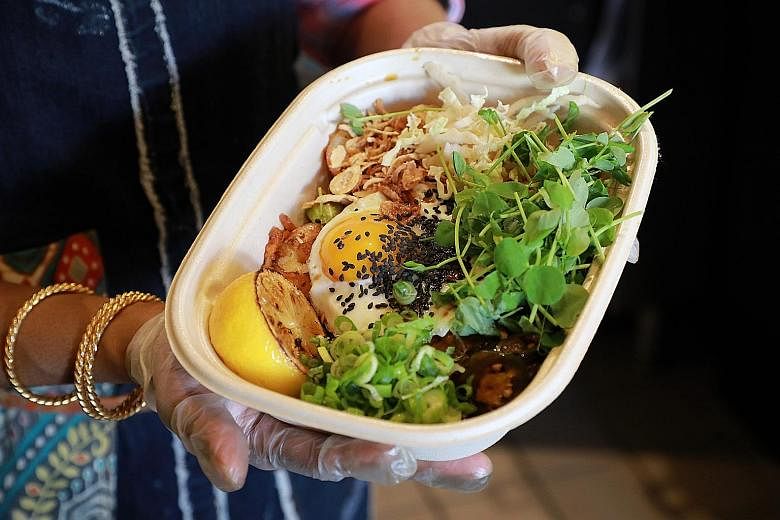High rental and business cost in San Francisco is making Malaysian restaurant owner Azalina Eusope cry every day.
"But the food comforts me," said the 41-year-old chef, who runs a "mamak-style" restaurant business in the city.
"Ten years ago, I was selling food under a tent at the farmers' market. As a newly single mother, I needed income. I prepared the food and at 4am, with my kids sleeping in the car, took it to the farmers' market and set up.
"Now I'm back in survival mode," she said.
A recent report by McKinsey predicts that one in five restaurants in the United States, or more than 130,000, will be gone by next year.
Independents like Ms Azalina will be most vulnerable because of their thin margins and poor access to capital.
A fifth-generation street vendor, she grew up in Penang and moved to San Francisco with her then husband in 2001. She was a housewife, but when the couple divorced later, she decided to turn to her childhood Muslim-Indian cuisine for solace and income.
Her popular dishes include laksa, Hokkien mee, a variety of curries served with coconut rice and ayam masak merah, or simmered chicken with green tomato chutney.
Her food business grew steadily from that food market tent to include a kiosk in the Market Square food hall, retail grocery sales and a catering business.
Last year, she opened Mahila, a full-service restaurant. She has 70 employees, the majority of whom are women. She was about to start three more restaurants when the pandemic struck.
Her biggest concern now is her employees, whom she did not lay off.
"Without my employees, I can't be where I am today," she said. "I need them. I can't betray them. In the long run, they will be there for me."
Instead, she asked some of the managers to take small pay cuts to make it possible to keep everyone on the payroll. "I come from a very poor family and I know what money means."
She shifted from the corporate event catering business that vanished in the pandemic to selling packaged sauces and noodle meal kits to local grocery stores and directly to consumers. And she increased takeout orders via online ordering.
She applied for several financial assistance grants, but none has come through.
"I don't want a loan that will keep putting me in the hole," she said. "That's stupid. I have to take care of myself. I can't spend the rest of my life paying off my debt."
She also started a GoFundMe campaign. About US$15,000 (S$21,000) has been raised towards a goal of US$25,000.
She also renegotiated her leases.
"One landlord has been very kind and forgiven rent," she said. "The other landlord wants at least 50 per cent."
Nonetheless, the financial picture is troubling. She said the company had been healthy before and had a safety net, but she also took some money out of her personal savings.
"We have lost a lot of money and still continue losing money," she said.
Still, she is persisting with the plan to start her new restaurants by December.
"It's a big risk, but I am going for it," she said.
She expects Mahila to reopen for dine-in customers on July 15. Seating will be only by reservation and at half occupancy. The menu will be limited and the prices lower.
"This will help with inventory and less waste, and our takeout will be a simpler menu, as well," she said.
She is nervous but optimistic about her business.
"I am not a big-name Michelin-star restaurant," she said. "We have a good following of people. They have been buying food and supporting us. Some customers bring me flowers and tell me how much they love our food and are so grateful we are still doing this. That feeling of being appreciated is priceless. It makes me want to work even harder."
The takeaways from her story:
- Consider crowdfunding. Online fund-raisers can provide a source of cash. These grassroots efforts build customer loyalty and allow your regulars to feel as if they are doing their part to support your business.
- Slim down the menu. Consumers have adjusted to lower prices during the pandemic. These new behaviours will require restaurants to make menu and pricing adjustments.
- Train your staff. Survival will rely on a lean mode of operation. The ability of employees to handle multiple tasks will provide more flexible staffing.
- Strengthen digital outreach. An easy-to-navigate online-ordering presence has been a salvation for many restaurants.
- Control overhead costs. Rent concessions may be vital to keep a business from closing completely. Working with a landlord to negotiate rent that has accrued while closed can be a lifeline.
NYTIMES


